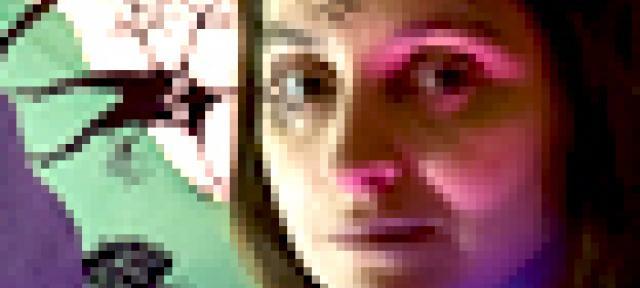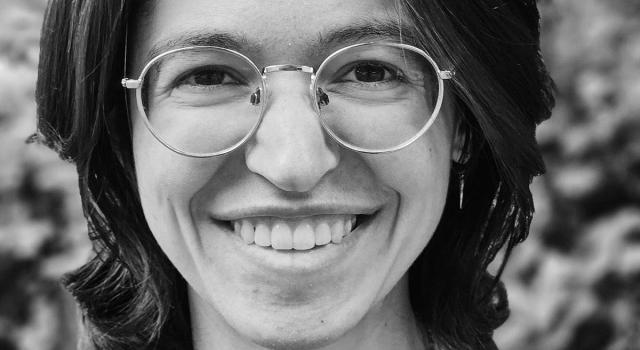Q&A with Professor Andrea Dezso

When Andrea Dezsö, associate professor of art, got a request from an editor at Princeton University Press to illustrate The Original Folk & Fairy Tales of the Brothers Grimm, she hesitated, but only briefly.
Illustrator of The Complete Original Folk and Fairy Tales of the Brothers Grimm
When Andrea Dezsö, associate professor of art, got a request from an editor at Princeton University Press to illustrate The Original Folk & Fairy Tales of the Brothers Grimm, she hesitated, but only briefly.
“From the point we signed the contract to the point that all illustrations were made, created, approved, scanned, cleaned, sent, and ready for printing, it was a three-month project,” she says. “I wasn’t sure it could be done.”
On comparable projects, with fewer images, she generally spends a year and a half. But she felt, right away, that this would be “an amazing project. And it felt like it fit perfectly with what I like to do,” she says.
She took it on, knowing that she would need to be very disciplined and focused, and the results are stunning. The book quickly became Amazon’s top seller in its category, and a first printing of 7,000 sold out in three weeks. With back orders for holiday gifts building up, a second printing has just been issued.
Q. What’s your favorite story in the new Brothers Grimm book?
The last story is called “The Golden Key,” the story the Grimm brothers always wanted to be the last story in the book. That story is focused around a big kind of “missing” element or hole or empty space, and I just really love that idea. It feels like such a universal kind of device in art and in writing.
It’s this young boy who goes out to the woods to collect firewood, in the winter, and he starts to get cold so he wants to build a little fire for himself. As he gathers the wood and cleans the snow to build a little fire, he finds this little golden key, and he thinks, “Where there’s a key, there’s a lock.” He starts digging in the earth, and he finds a little metal box. Eventually he finds where the key goes. He puts in the key and the key fits perfectly, and he opens the box. Now we are all sitting here, and we are waiting to see what’s in the box, and that’s the end of the story … they never tell you. And not telling you everything, but leaving these empty spaces that you can actually fill out is I think much better than laying out everything.
Q. Any thoughts on why you do art?
Is it because I want to develop a brand and then live as a brand, or is it because of the thrill of discovery and curiosity? I decided quite early on that I’m just going to try to do what really makes me excited, and what makes me feel like when I was a child and I came up with a project and was busy for weeks. And if that project is not in the same vein as the one that I’ve done before, if it’s a different material or a different media, I’m just going to have to learn that thing, and do it like that, because that’s what, for me, makes it alive.
Q. Would you describe the process you use when illustrating a book?
I read the copy and then some kind of images just come to my mind right away. I sketch them right there in the margin of the text, really tiny, with a very blunt colored pencil. The pencil has three colors in it, in one, so you can’t really control which one of the three colors comes out.
The reason for that is because sometimes I can’t see the image very clearly that appears. Working with a very blunt instrument makes that fuzziness ok. If I would work with something very sharp and precise, it would be a big pressure to see clearly and draw clearly, but I don’t always have that time.
"I loved the fact that there are no grades [at Hampshire], because it always felt to me, having taught creative subjects, there’s not a really perfect way to grade those kinds of subjects."
If images don’t pop immediately into my mind, then I just underline some words that seem to go to the heart of the story. I don’t try to illustrate scenes necessarily that fit in the story or actual events, but I try to see where the heart of the story is and create an image that is evocative to that. After I do that—the little blunt pencil thing—sometimes I let it rest for a little bit and I read something else, something from the same book, or work on something else with the same project. So I’m still engaged with it, but not with that image, so it can have a little space around it, to breathe.
Then I go back to it, and I take another pencil that might be a little bit sharper, and try to focus the image a little more, but still very small in the margin. I keep going in like that, with sharper and sharper instruments, until I see it very clearly. Then I trace it, and create a very small but very accurate sketch, the way it will pretty much look when it’s large with a black silhouette.
When the approval comes in, I enlarge the sketch and start working on the final, which is really just making it larger and more detailed and cleaning it up. I usually work a bit larger than what is going to be in the book, so we shrink it down, and that also makes it sharper and clearer. I feel that most of the work—the creative part—happens in the sketch phase, because I do such elaborate sketches, and the execution of the final pieces is really for the book.
Q. You describe your first visit to the College as “falling in love with Hampshire.” Can you tell us why?
I loved the campus. I loved the farm. I loved the fact that there are no grades, because it always felt to me, having taught creative subjects, there’s not a really perfect way to grade those kinds of subjects. It’s not like you give a test. It’s always a struggle of what to grade. Should I grade effort, or should I grade the quality of the final result?
Some people have to put in much more effort for more modest results, where other people effortlessly throw out something amazing but it may not be sustainable in the long run. There are all these questions that for me were big questions and I always thought that I would sleep so much better if I could write down, “This is what this person did, and this is their personal path and development for the class.”
Q. Did you just know that Hampshire’s academic approach would mesh with your style of teaching?
The fact that people can combine and figure out their own path and their own interests, that was very unusual. I hadn’t heard about Hampshire before, and when I saw that a model like this exists, I just thought, this is perfect for the way I’m interested in teaching and guiding students, and looking at how things combine in the real world.
Listen to Andrea Dezso discuss her style of teaching:



